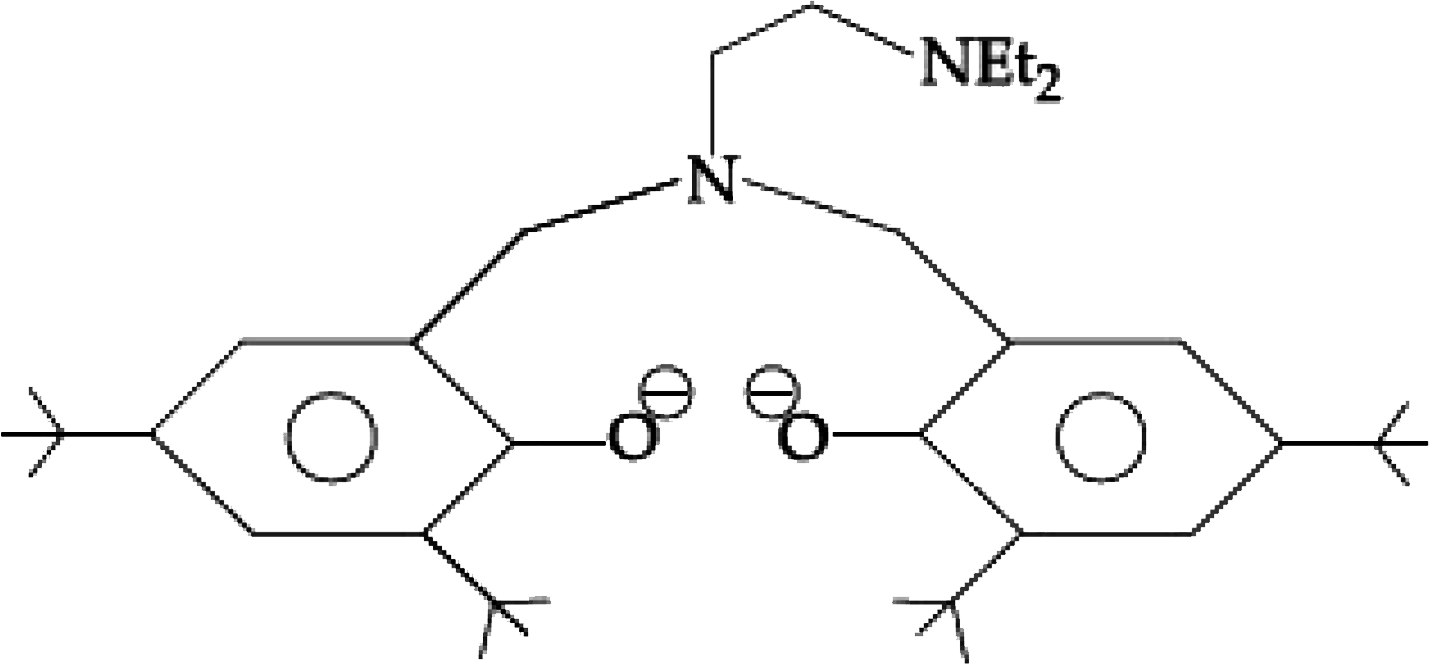Crystal field theory with its assumptions of completely electrostatic metal-ligand interactions, does not appear to retionalize the spectrochemical series particularly well. To explain the order of ligands in the series we must admit some covalent contribution to the metal ligand bond, both sigma and pi.
Sigma bonds are formed by ligands using their p orbitals (e.g. Cl−) or by hybrid orbitals (e.g. sp3) by (H2O) since all ligands are capable of such sigma interaction, this is not very useful in rationalizing spectrochemical series. The pi bonding ability of ligands partially justifies their position in spectrochemical series. pi-acid ligands. which can accept electron density from filled metal orbital into their empty orbital via pi interation appear towards stronger/higher and of the series e.g. CN−.PR3 etc. While sigma-donor ligands are typically weak field ligands e.g. Cl−,O2− etc.
Q. Which of the following d orbitals of the central atom is useful for sigma bond formation with ligands in octahedral field?
dxy,dx2−y2
dz2,dx2−y2
dyz,dxz
dxy,dyz,dxz
The correct Answer is:A
To solve the question regarding which d orbitals of the central atom are useful for sigma bond formation with ligands in an octahedral field, we can follow these steps:
1. Understand Sigma Bond Formation:
- Sigma bonds are formed through head-on overlapping of orbitals. In the context of coordination complexes, this involves the overlap of the d orbitals of the metal with the orbitals of the ligands.
Hint: Remember that sigma bonds require direct overlap of orbitals.
2. Identify the Geometry:
- The question specifies an octahedral field. In an octahedral complex, the ligands are positioned at the corners of an octahedron around the central metal atom.
Hint: Visualize the octahedral geometry to understand the spatial arrangement of ligands.
3. Determine the Relevant d Orbitals:
- In an octahedral field, the d orbitals split into two sets: the lower-energy t2g set (dxy, dxz, dyz) and the higher-energy eg set (dz², dx²−y²).
- The ligands in an octahedral field interact primarily with the eg set of d orbitals because these orbitals point directly towards the ligands.
Hint: Recall the crystal field splitting diagram for octahedral complexes to identify which d orbitals are oriented towards the ligands.
4. Conclude on the Useful d Orbitals:
- The d orbitals that are useful for sigma bond formation in an octahedral field are the eg orbitals, specifically dz² and dx²−y².
Hint: Focus on the orbitals that have the correct orientation to overlap with the ligand orbitals.
5. Final Answer:
- The d orbitals useful for sigma bond formation with ligands in an octahedral field are dz² and dx²−y².
Summary:
The d orbitals of the central atom that are useful for sigma bond formation with ligands in an octahedral field are the dz² and dx²−y² orbitals.
- Sigma bonds are formed through head-on overlapping of orbitals. In the context of coordination complexes, this involves the overlap of the d orbitals of the metal with the orbitals of the ligands.
- The question specifies an octahedral field. In an octahedral complex, the ligands are positioned at the corners of an octahedron around the central metal atom.
- In an octahedral field, the d orbitals split into two sets: the lower-energy t2g set (dxy, dxz, dyz) and the higher-energy eg set (dz², dx²−y²).
- The ligands in an octahedral field interact primarily with the eg set of d orbitals because these orbitals point directly towards the ligands.
- The d orbitals that are useful for sigma bond formation in an octahedral field are the eg orbitals, specifically dz² and dx²−y².
- The d orbitals useful for sigma bond formation with ligands in an octahedral field are dz² and dx²−y².
The d orbitals of the central atom that are useful for sigma bond formation with ligands in an octahedral field are the dz² and dx²−y² orbitals.
Similar Questions
Which of the following is a π-acid ligand?
View SolutionCorrect order of power ligand in spectrochemical series
View SolutionWhich of the following ligands are correctly represented in an spectrochemical series ? .
View SolutionLigands contains :
View SolutionThe following ligand is :
 View Solution
View SolutionWhich of the following ligand does not as π−acid ligand?
View SolutionThe interactions of ligands with protein,
View SolutionName a neutral ligand.
View SolutionAssertion : C - O bond in metal carbonyl is long.
Reason : There is delocalisation of electrons from filled d orbitals into the empty orbitals on the CO ligands.View SolutionThe strong field ligand is "
View Solution

